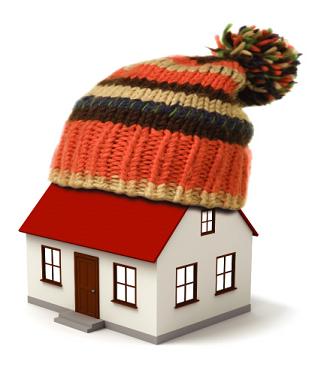Going Green: Renovating for Energy Efficiency
Soft furnishings, stone benchtops and the overall look of your home might be the thing that gets you excited about renovating. But what about the things you can’t see – like your home’s energy efficiency rating?
Reasons to make your home energy efficient
There are some really good reasons to include energy-efficient materials and services in your renovated home. Here are just a few.
To meet national building code regulations
Generally, if your renovation requires a building permit, and you’re extending the floor space of your house, it will need to comply with 6 star energy ratings. Your local council can provide specific advice based on your plans.
The code’s energy efficiency provisions for housing takes into account the performance of the house and its domestic services including:
- materials used in the building
- external windows and shading
- air circulation and air-tightness
- hot water supply
- insulation and lighting.
Think about the benefits of retrofitting your home with energy efficient measures. It can be a worthwhile process, even if it’s not a compliance requirement for your renovation.
To make your home more comfortable and cost efficient
Sometimes it’s easier to implement these solutions during your renovation project than at any other time. Your home’s level of energy efficiency will determine how comfortable your home is to live in, how costly it is to operate and possibly your resale value.
Being ‘comfortable’ in your home may come down to personal preference. Comfort in energy-efficiency terms usually relates to how cool a house will stay in summer and how warm it will stay in winter.
A home with plenty of natural light may save you money on artificial lighting, but the location of the windows may make rooms inhospitable at different times of the year. For example, south-facing windows can help cool your house down in summer but keep the house colder in winter months. And west-facing windows get the heat of the afternoon summer sun.
The amount of insulation in your house (including your walls, roof and windows) can affect how cool or warm your house will be during the year. Insulating well is money worth spending.
How to make your home greener
If you’ve lived in your home for a while, maybe you’ve identified some obvious opportunities to improve its energy efficiency. So, where do you start? And what changes should you consider to make your home greener?
Get independent and expert advice
Living greener is a great online government resource that provides information about making your home energy efficient. It includes information about:
- house siting, outdoor areas and floor plans
- building materials and household appliances
- lighting, heating and coolinghot water, solar, wind and hydro.
How easy is your home to retrofit?
The ability to retrofit existing homes with energy-efficient solutions often comes down to budget and the building itself.
Homes built on concrete slabs with flat rooflines don’t easily lend themselves to hydronic or central heating installation. So you may want to consider whether solar panels might be an option to reduce energy consumption, particularly if the heating or hot water service is electric.
Ask family and friends for referrals before getting companies and tradespeople to explore the energy efficiency options suitable for your home. They might alert you to some of the pitfalls or benefits you hadn’t thought of before.
Upfront cost vs. ongoing savings
Always do the sums so you can accurately project the savings you will make over time.
Ask the professionals you’re dealing with for as much pricing information as you can. Give them details about previous energy use in both summer and winter periods. You should find this on your energy bills.
Consider the upfront costs involved and compare them with any potential savings these energy efficient measures might deliver during the period you plan to stay in your home. Delivering ongoing savings on any or all of these measures may give you a return on your investment.







